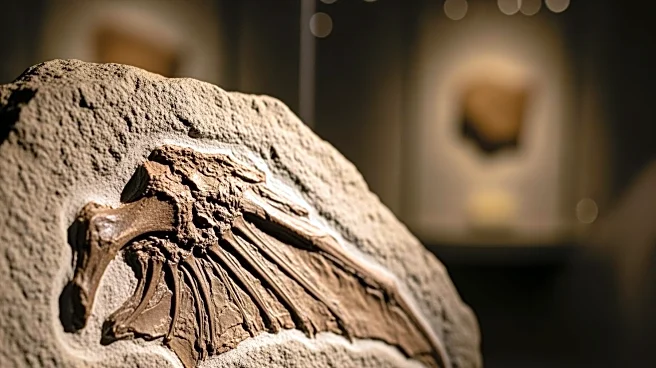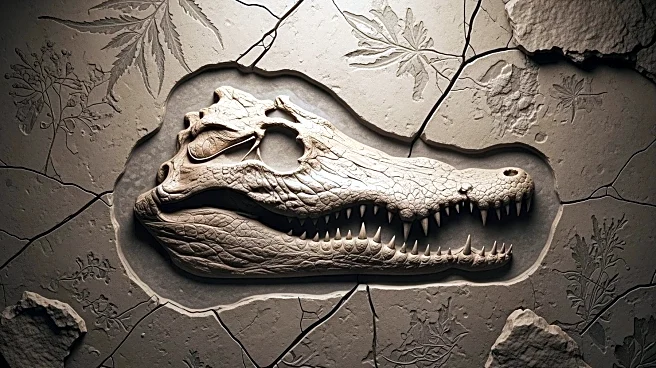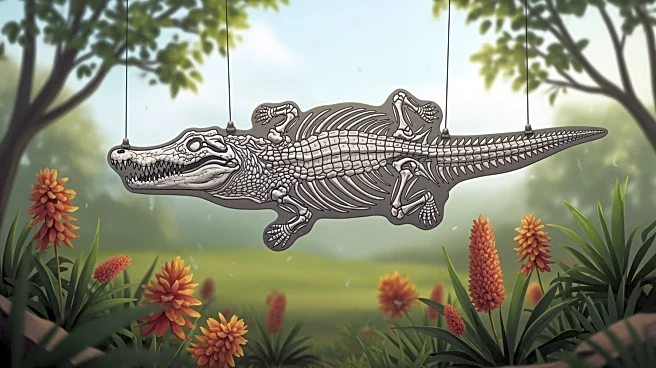What's Happening?
Researchers have identified a new species of flying reptile, Bakiribu waridza, from fossilized remains found in regurgitalite at the Museu Câmara Cascudo in Brazil. The fossils, previously overlooked,
include partial remains of two pterosaurs and four fish. The discovery was made through phylogenetic and paleohistological analyses, revealing unique features such as elongated jaws and dense, brush-like tooth rows. The regurgitalite suggests these pterosaurs were prey to larger dinosaurs, providing insights into predator-prey dynamics in prehistoric ecosystems.
Why It's Important?
This discovery highlights the potential of museum collections to yield new scientific insights, emphasizing the importance of re-evaluating existing specimens. The identification of Bakiribu waridza contributes to the understanding of pterosaur diversity and their ecological roles, particularly in tropical regions. It also sheds light on the interactions between pterosaurs and their predators, offering a glimpse into the complex food webs of the past.
What's Next?
Further analysis of the regurgitalite and associated fossils may reveal more about the diet and behavior of both the pterosaurs and their predators. Researchers might conduct additional studies to explore the evolutionary adaptations of Bakiribu waridza and its ecological niche. The discovery could prompt museums to reassess their collections for overlooked specimens that may hold significant scientific value.
Beyond the Headlines
The finding underscores the importance of interdisciplinary approaches in paleontology, combining phylogenetic and paleohistological analyses to uncover new species. It also highlights the role of museum collections in advancing scientific knowledge, encouraging institutions to invest in the preservation and study of their specimens.












